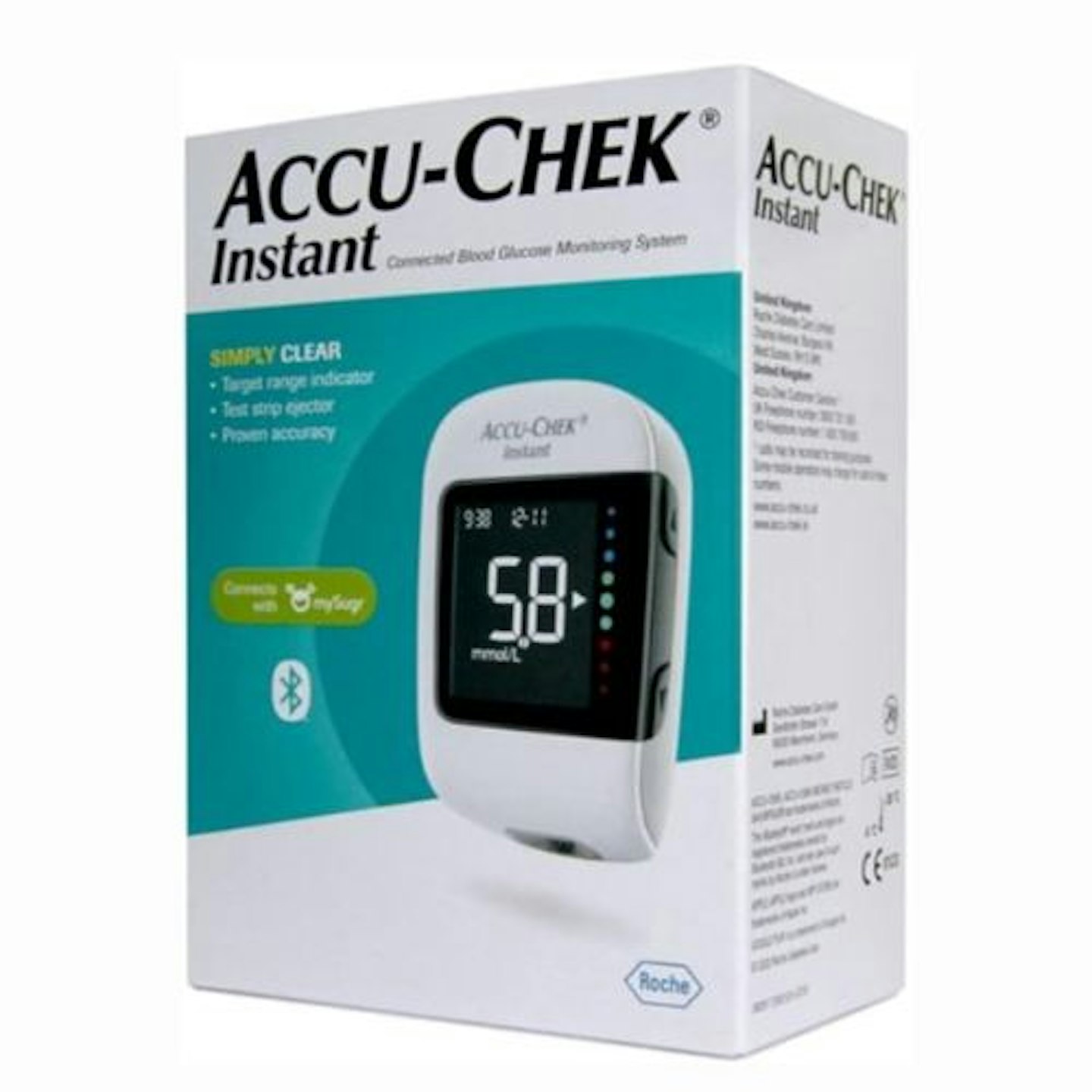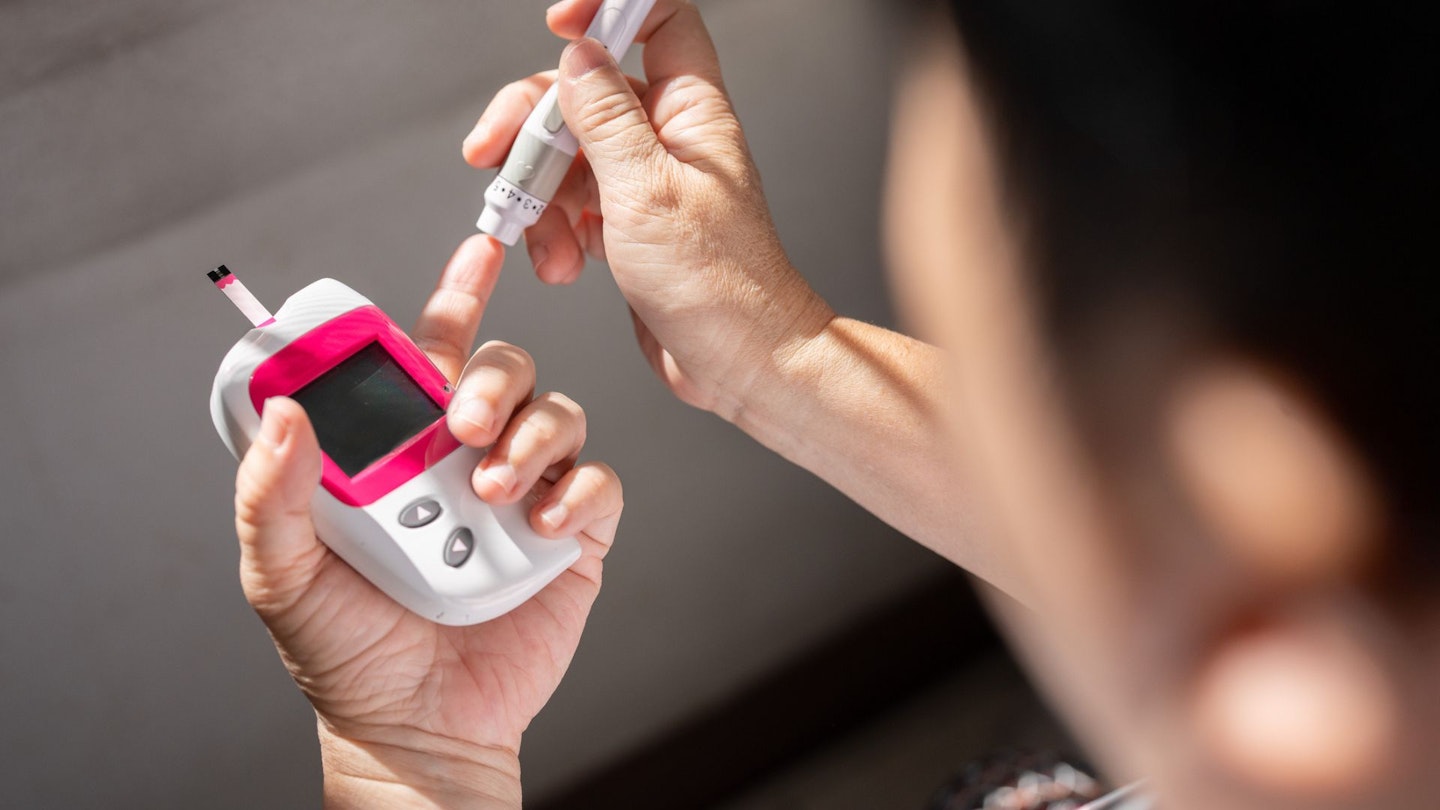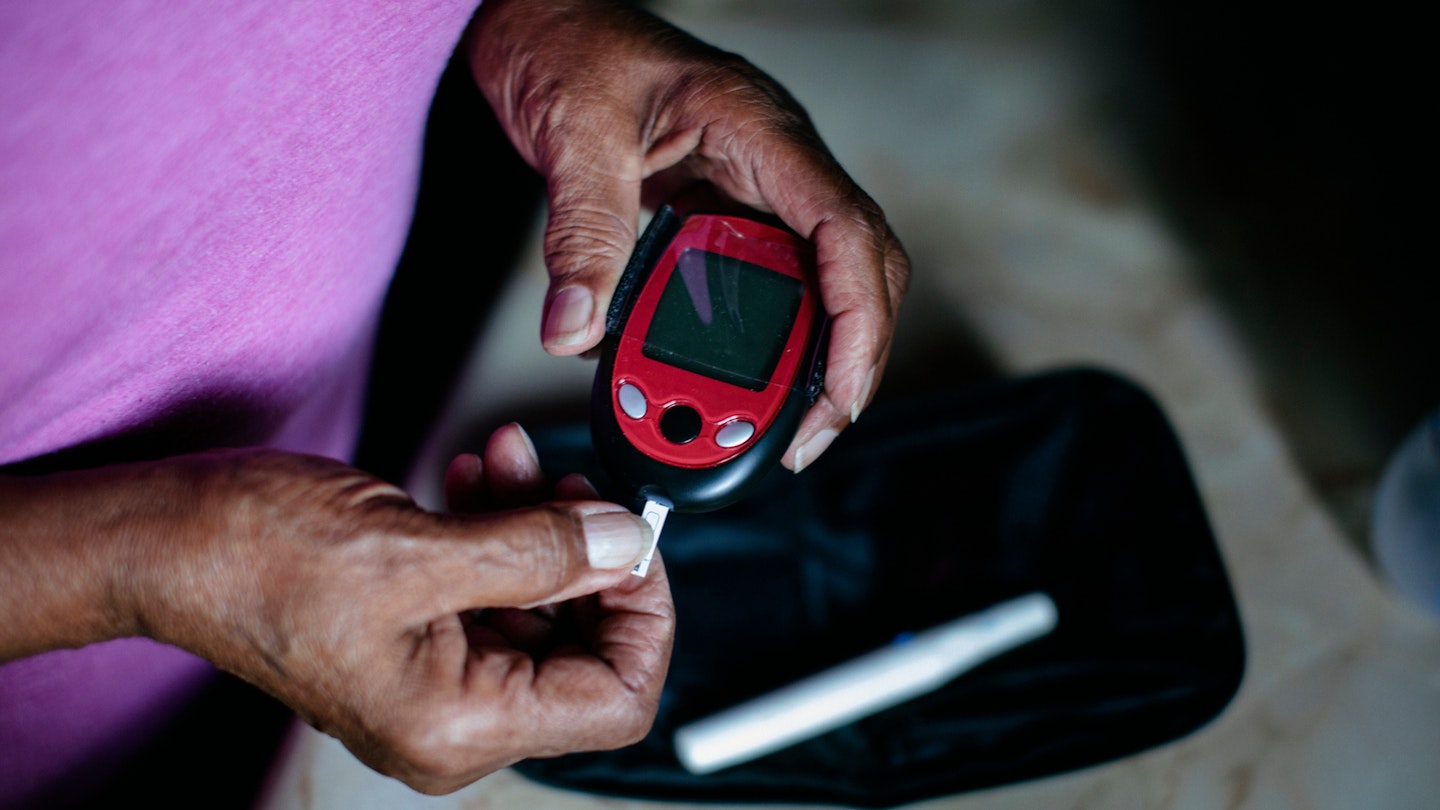Choosing the best glucometer will make sure you keep on top of your blood glucose levels. Whether diagnosed, pre-diabetic or unsure about your status, using a glucose monitor can make sure your levels are within the ideal range, away from the dangerous high and low zones. With the guidance of Yours Digital writer Sam Price, who was diagnosed with Type 1 in January 2023, and experts at Diabetes Strong, we have written a guide and answered FAQs on these helpful home health gadgets.
Diabetes is a lifelong condition that causes a person’s blood sugar to become too high. This is very dangerous and can lead to complications, such as eye and kidney disease, an increased risk of stroke and heart disease and much more. It can affect any people of any age group, says Diabetes Strong, who adds, “There are two types of diabetes, and insulin is at the root of both.” According to Diabetes Atlas, approximately 537 million adults are living with diabetes and many of us may be undiagnosed.
Best glucometer at a glance:
• Best overall glucometer: Kinetik Wellbeing Blood Glucose Monitoring System – view at Argos
• Best budget glucometer: KTEEXR Blood Glucose Monitor – view on Amazon UK
• Best continuous glucose monitor: Abbott Freestyle Libre Sensors – view on Amazon UK
Diabetics are encouraged to check their blood sugars regularly – whether with a CGM or a glucometer. Much like a blood pressure monitor, a glucometer is a home device to help us monitor and manage a health condition. If you’re unsure as to why blood glucose monitoring is important to diabetics, think of a glucometer as a small blood test, that "measures how much glucose (sugar) is present in a blood sample," says Diabetes Strong. A reading can help diabetics eat, dose insulin and combat highs and lows.
Unlike a pulse oximeter which attaches to our skin, a glucometer needs contact with our blood, which is not ideal if you’re not keen on the sight of it. Sam said, “I still have to brace myself when I'm doing a finger prick.” Though finger-pricking monitors have been mostly replaced with high-tech continuous monitors, a classic glucometer is ideal for people who aren’t techy. Sam recommends having a backup glucose meter on hand because these CGMs can let you down.
Best glucometer
Best overall glucometer

www.argos.co.uk
The Kinetik Wellbeing Blood Glucose Monitoring System offers simplicity, speed, and discretion in testing. Clinically validated to the highest standard, it's user-friendly for all, including pregnant women with gestational diabetes. With meal markers and alert settings, it provides instant results, requires no coding, and features a 1,000-reading memory - with essential accessories for on-the-go measurements.
Customer review: "Excellent value for money and easy-to-read results. Step-by-step instructions. Great features."
Pros
- User-friendly for all
- Fast and accurate results
- With 1,000 reading memory
Cons
- Comes with only 25 testing strips
Best budget glucometer
For those of us on a budget, the KTEEXR Blood Glucose Monitor ensures convenient daily health monitoring with a blood glucose monitor, 25 test strips, 25 lancets, a pain-free lancing device, a carry bag, and a user manual. It delivers quick and accurate results in five seconds, meeting international standards. With no coding and advanced biosensor technology, it's easy to use with a large display.
Customer review: "Great little machine for keeping a check on your blood sugar levels if you've been diagnosed with prediabetes or diabetes. It's so easy to use, accurate and fast. It has a nice little case for storing machine test strips and lances which makes it easier if you're on the go or going on holiday. I would recommend this product."
Pros
- Requires no coding and is easy to operate
- Complete with test strips, lancets and a carry bag
- Carefully designed for accuracy and reliability
Cons
- Comes with only 25 testing strips
Best continuous glucose monitor
To be used in conjunction with either a Freestyle Sensor or LibreLink App, the Abbott Freestyle Libre Sensors are the best CGM (continuous glucose monitor) around. You wear a small, water-resistant sensor on your body day and night that reads your sugar levels so you can see the information on your mobile, or other device. You can also set an alarm to sound if your sugar levels go too low or too high.
Customer review: "Brilliant sensor. Accurate blood sugar readings day and night. Also at night alarm wakes you up before you get too low and you can take quick action to avoid a hypo."
Pros
- Set an alarm to sound off when levels are too high or low
- A water-resistant patch that measures your levels automatically
- Can be used with either a monitor or with the Freestyle App
Cons
- Sensors only last two weeks
Recommended

www.boots.com
The Accu-Chek® Instant Blood Glucose System is a user-friendly blood glucose meter, that effortlessly connects to the mySugr app for automatic logging and clear result interpretation. It features a large backlit display, target range indicator, wide dosing area, guided strip port, and hygienic strip disposal. Additionally, it comes with the Accu-Chek FastClix lancing device for virtually pain-free lancing.
Customer review: "Very simple and easy to use, the ability to link to the MySugr app to store and monitor results is great, especially when you get a free upgrade to the pro version. The only downside is that the strips are a little smaller than a previous Accu-Chek monitor I had, a little bit fiddly but easy to get used to."
Pros
- With the Accu-Chek FastClix for pain-free lancing
- User-friendly and connects to the MySugar app
- Clearly see results on a large, backlit display
Cons
- Some customers say the instructions are a little confusing
Best glucometer testing kit
Next, we have the mighty (and convenient) Sinocare Diabetes Testing Kit with Monitor. It offers a comprehensive solution with a monitor, 50 test strips, 50 lancing devices, a pain-free lancing pen, and a carrying bag. Equipped with advanced glucose dehydrogenase technology for accurate measurements and a painless lancing pen with adjustable depth settings. We're very impressed.
Customer review: "It’s a good product, no need to set it up, it works straight away, simple and easy to follow instructions. It comes with a chart of blood sugar values and it’s fine to use, the only thing I didn’t like was the pen. It wasn’t explained that you have to pull it back and then it goes forward again and it’s ready to use. I thought it had to stay all the way back to function but still it worked, it’s a bit painful when you start but then you get used to it."
Pros
- Convenient, easy to use, and travel-friendly.
- Complete with a pain-free lancing pen
- Comes with 50 test strips and 50 lancing devices
Cons
- The finger-pricking pen is a little fiddly to use
NHS approved glucometer
The VivaChek Diabetes Test Kit surpasses international standards and boasts a 14-year recall-free history. The smart blood sugar tester marks pre/post meal results, storing averages for 7, 14, and 30 days with a large memory of 900 readings. The comfortable lancing device requires a tiny blood sample, providing less pain and fast five-second results. Plus, the improved result accuracy makes it ideal.
Customer review: "I recently purchased the Vivachek Diabetes Test Kit, and I couldn't be happier with my choice. As someone managing diabetes, this kit has been a game-changer. The inclusion of ketone and hypo warnings provides added peace of mind, and the fact that it's NHS-approved reassures me about its accuracy. With 900 memory slots, it's easy to track my glucose levels over time, and the package includes 25 test strips and lancets, which is a great value. This kit has made monitoring my blood sugar levels more convenient than ever, and I recommend it to anyone in a similar situation."
Pros
- Suitable for everyone, including pregnant people
- The lancing devices only require a tiny, pain-free sample
- Improve accuracy, surpassing international standards
Cons
- Some customers found the initial setup a bit fiddly
FAQs
What is the difference between Type 1 and 2 diabetes?
A lifelong condition, diabetes can be separated into two types: 1 and 2. Experts at Diabetes Strong have given us a clear, jargon-free explanation if you’re looking for a little clarity on the different types.
Type 1 diabetes
Type 1 means your blood glucose levels are too high “as the pancreas cannot produce the hormone insulin,” says Diabetes Strong. The cause of Type 1 may not be directly related to lifestyle. As a consequence, you have to inject this organ with extra insulin to control the blood glucose levels.
After all, your body will “continue to break down carbohydrates” from the food and drink you eat throughout the day – into glucose. The problem is, that there is a deficit of insulin that helps guide the glucose into your body’s cells – hence a high build-up of glucose in your bloodstream.
Well, how do I know if I’m diabetic? Diabetes is a relentless condition with a lot of responsibility on you. So, it’s important to keep yourself healthy. As well as experiencing symptoms, your blood sugar levels, as well as a HbA1C test on a blood test can give you a good indication if you are diabetic.
So, if you’re concerned, here are some common symptoms of Type 1 diabetes below:
• Increased thirst
• Slow-healing cuts and sores
• Fatigue
• Blurred vision
• Frequent urination
• Unexplained weight loss
Type 2 diabetes
Type 2 is a little more common than Type 1 – which can be caused by an unhealthy lifestyle. Diabetes Strong explains: “The body does not produce enough insulin, or the body’s cells do not react to insulin. Insulin is vital as it helps your body use glucose for energy.”
Like Type 1, Type 2 diabetes is a lifelong condition – linked to “one’s weight, lack of exercise or a family history of this type of diabetes.” So, to prevent diabetes, you can keep moving and exercising, and make better choices with your diet. Eat vegetables – and stay away from the tempting treats.
According to Diabetes Strong, the most common symptoms of Type 2 diabetes are "feeling thirsty a lot of the time, as well as tired and needing to pee very often."
Other types of diabetes
There are other, less common or temporary forms, of diabetes:
Gestational diabetes - can develop during pregnancy. This type affects those who haven't been affected by diabetes before. It means you have high blood sugar throughout pregnancy, but usually goes away after giving birth. It can be caused by many factors including weight, age, genetics and hormones.
Pre-diabetic – is when someone’s blood sugar levels are high, but not high enough to be considered diabetic yet, also known as glucose intolerance. So, they may be more at risk of developing Type 2 diabetes in the future. This can be caused by lifestyle choices, genetics, high blood pressure and age.
What is a 'normal' blood sugar reading?
A normal blood sugar level range is "generally between 4 mmol/L (70 mg/dL) and 9.9 mmol/L (130 mg/dL) depending on the time of day and the last time they ate a meal," confirms Diabetes Strong. Anything that falls out of this range can be cause for concern and may indicate someone has diabetes or is prone to developing it. A glucometer and a chat with your GP may answer some of your questions.
Hypoglycaemia – also known as a 'low' or a 'hypo' is on the lower end of the blood sugar range. Lows are more urgent than highs – and it’s important to act quickly. They can be caused by the injection of too much insulin, not eating enough during the day, heat, exercise, illness, hormones, stress and more. As a result, levels need to be brought up by consuming sugar – through sweets or fizzy pop.
Symptoms include shaking, faster heart rate, extreme hunger, sweating, dizziness and confusion.
Hyperglycaemia – is also referred to as 'hypers' or 'highs', with a high reading. They’re dangerous over a long period – and can be caused by insulin resistance, not injecting enough insulin, consuming too much carbohydrates, certain medications, hormones, illness, stress and more. When someone has a high, they need insulin to bring their levels down – which is injectable.
Symptoms include extreme hunger or thirst, blurry vision, fatigue, frequent urination or slow healing.
How accurate are glucose monitors?
For those diagnosed with diabetes, using a glucometer is the only way you can evaluate how well your long-term diabetes treatment plan is working. It's essential to your lifestyle. When you're expected to check your blood glucose levels more than 10 times per day, it's reasonable to ask these questions.
Luckily, we had Diabetes Strong around to reassure us:
"Glucose meter accuracy is not seen as a big problem in the diabetes community. You don’t need 100 per cent accuracy to make decisions about food and insulin, and most meters do a good enough job."
When is best to check blood sugars?
Some common times to check your blood sugar are, according to Diabetes Strong:
• When you wake up and before you go to bed
• Before you eat and one to two hours after eating
• Whenever you feel like your blood sugar is high or low
How can I prevent diabetes?
Both environmental and genetic factors can cause diabetes, says Diabetes Strong, but the cause is unknown. Type 2 diabetes can be caused by an inactive lifestyle and being overweight.
But, when it comes to preventing diabetes, you can “contribute to lowering the risk” of Type 2 with healthy eating and exercise. On the other hand, the risk of Type 1 diabetes cannot be lowered.
Diabetes Strong suggests the following lifestyle changes to prevent Type 2 diabetes:
• Take prescribed medicines
• Manage blood sugar level and body weight
• Avoid fried, processed food and sweet beverages
• Exercise regularly and sleep well
• Say no to smoking and alcohol
• Regular health check-ups

Piper Huxley is a Homes, Garden and Wellness Product Writer for Yours, an all-rounder who will write on anything from décor to wellness. When not scouring the net for the best home bargains, Piper is listening to a musical soundtrack and tending to her houseplants.




